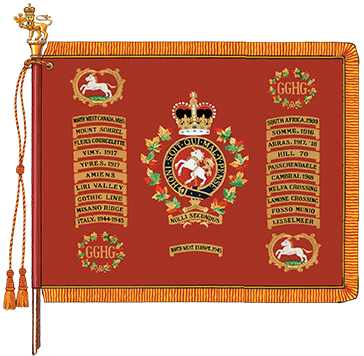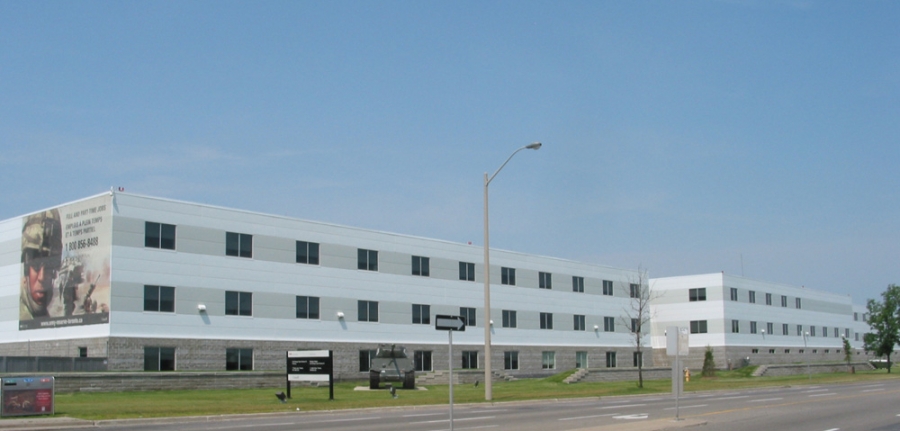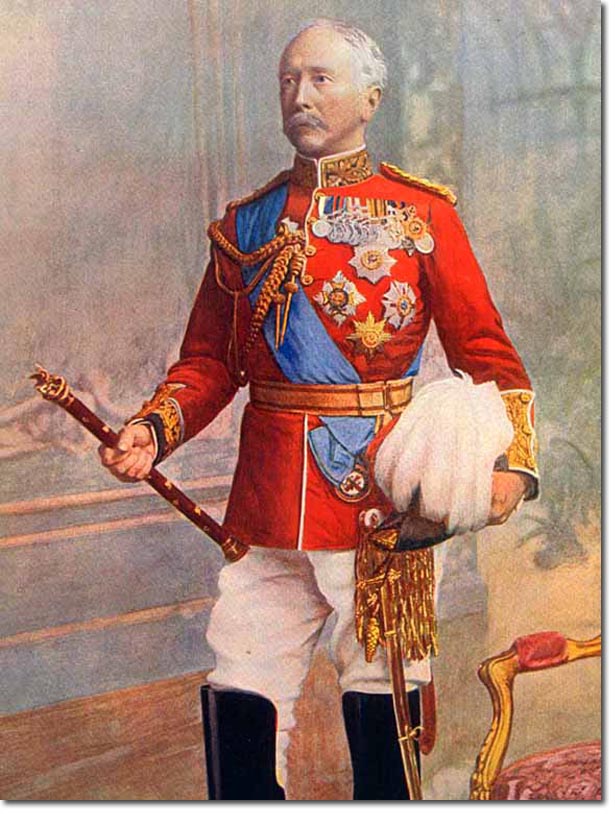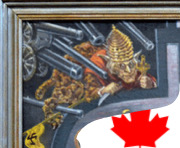|
mediaphage posted:. if you limit pride crosswalks to historically gay neighbourhoods you'll have like six crosswalks in north america I think they should legalize crosswalks that aren't painted with rainbow colors so everybody, not just gays, can experience the thrill of crossing the street
|
|
|
|

|
| # ? Jun 7, 2024 08:21 |
|
pass make the straights stay in their lane thanks
|
|
|
|
Karach posted:yeah but only because a majority of the inhabitants (Albertans) wanted it. What are the odds some of the people who voted for this fly confederate flags, thin blue line, or some other flavor of "special interest group" flag.
|
|
|
|
look, you can fly any flag you want, as long as you're not proud of it
|
|
|
|
Oxyclean posted:What are the odds some of the people who voted for this fly confederate flags, thin blue line, or some other flavor of "special interest group" flag. if you drive through the rural areas of the prairies, you will see confederate flags from time to time. I like these because you know they have almost no political significance for the guy flying it, other than "I know this is the racism flag."
|
|
|
|
Karach posted:if you drive through the rural areas of the prairies, you will see confederate flags from time to time. This is what happened when American media removed Orangeist identity from our racists smdh. For real though, that's completely incoherent and shows just how atomized we are that our bumpkins can't even have an authentic and locally grounded racism.
|
|
|
|
DJJIB-DJDCT posted:For real though, that's completely incoherent and shows just how atomized we are that our bumpkins can't even have an authentic and locally grounded racism. I know, it owns.
|
|
|
|
Out in PEI 10 years back I used to see confederate flags, I don't anymore actually. It's all those stupid "F*ck Trudeau" flags. Small win for CanCon.
|
|
|
|
DJJIB-DJDCT posted:This is what happened when American media removed Orangeist identity from our racists smdh. I mean British North America was fairly pro-Confederacy so historically it's not totally crazy.
|
|
|
|
mediaphage posted:well before it was also a sign of acceptance. if you limit pride crosswalks to historically gay neighbourhoods you'll have like six crosswalks in north america This is just the present
|
|
|
|
Dreylad posted:I mean British North America was fairly pro-Confederacy so historically it's not totally crazy. I don't think our friends the bumpkins are aware of that.
|
|
|
|
yeah it�s the same in southern ontario. surprising amounts of confederate flags no real connection to it (but lol even if then)
|
|
|
|
My southern Ontario high school�s football team was called the rebels and the school flew confederate flags. Actually I think all their teams were.
|
|
|
|
Rosser Ave in Brandon is named after a Confederate general. There's more history than you think
|
|
|
|
DJJIB-DJDCT posted:I don't think our friends the bumpkins are aware of that. I'm just saying that there's an argument that if they show up in Toronto and run a ticker tape parade for the Confederacy it's not racism, it's historical reenactment.
|
|
|
|
clearly this was galaxy brained triangulation by the british. the homeland can vaguely support the union while bna vaguely supports the confederates
|
|
|
|
Glimpse posted:My southern Ontario high school�s football team was called the rebels and the school flew confederate flags. Actually I think all their teams were. my middle school was originally the South Rebels, with the other school in the county being the North Patriots lol, but i lived in a holler in the states
|
|
|
|
The Fenians were right
|
|
|
|
(I have no idea if uk proper vaguely supported the union and I'm not looking it up. pretty sure they didn't officially support either side)
|
|
|
|
Dreylad posted:I'm just saying that there's an argument that if they show up in Toronto and run a ticker tape parade for the Confederacy it's not racism, it's historical reenactment. historical reenactment of racism?
|
|
|
|
pokeyman posted:(I have no idea if uk proper vaguely supported the union and I'm not looking it up. pretty sure they didn't officially support either side) No, Toronto was a known hub of Confederate sympathy, it was remarked upon during the Royal Visit by the Prince of Wales and strained Canada-US relations for the generation following the Civil War. As "The Belfast of the North", Toronto was also culturally inclined towards the Confederacy, and like someone said, this prompted the Fenian Raids. Confederate operatives in Toronto used it as a place to do their banking, connect with arms dealers to place orders for running the blockade, reach out to the British and French governments.
|
|
|
|
DaysBefore posted:The Fenians were right Cory Matthews had potential and if he hadn't hung around with that piece of poo poo Shawn Hunter he would have made something of himself, and I won't hear any argument otherwise
|
|
|
|
"Southern agents operated freely and openly with little to no concern from local authorities who were governed by British North America�s official policy of neutrality. Indeed, Southerners enjoyed the sympathy of most of Toronto�s political, social, and business elite�although few were as enthusiastic in supporting the Confederate cause as George Taylor Denison III*." "Canadian banks funded their activities and Toronto, Montreal, St. Catharines, and Halifax were among the centers of well-financed Confederate networks by Confederate agents and sympathizers in these cities. Several Canadian hotels across the territory, including the Queen's Hotel, Toronto and St. Louis hotel in Quebec City, acted as informal headquarters for Confederate Secret Service activities." "On 7 December 1863, while the new Union tug Chesapeake was preparing for service in the South Atlantic Blockading Squadron, 17 Canadians disguised as passengers seized it off Cape Cod, Massachusetts. Word of the takeover reached Portland on the morning of 9 December and quickly spread from there. The news prompted federal officials at northern ports along the coast to speedy action. On 17 December, the recently captured blockade runner Ella and Annie � which had been hastily manned, armed and sent to sea � caught up with the Chesapeake at Sambro, Nova Scotia. Shortly thereafter, the Northern gunboat Dacotah arrived on the scene; and its commanding officer prevented Ella and Annie from taking the recaptured tug back to Boston, lest such action seriously undermine British�U.S. relations. Instead, to observe diplomatic protocols, he escorted Chesapeake to Halifax where he asked the colonial Admiralty court to restore it to its owner. The court ruled the Confederate attack was illegal and returned SS Chesapeake to its Union owners but the Confederate sympathizers escaped with the help of some Haligonians, creating tensions that received international attention." "The most-controversial incident was the St. Albans Raid. Montreal was used as the secret base for a team of Confederates attempting to launch covert and intelligence operations from Canada against the United States. To finance their cause in October 1864, they robbed three banks in St. Albans, Vermont, killed an American citizen, and escaped with US$170,000. They were pursued across the Canada�U.S. border by Union forces, creating an international incident. The Canadians then arrested the Confederate raiders, but the judge ruled the raid was an authorized Confederate government operation, not a felony, which would have permitted extradition via the Webster�Ashburton Treaty" *Denison Armouries in Toronto is named after him  He wrote the most influential Canadian books on cavalry, Modern Cavalry, and History Of Cavalry. Because of his standing in the cavalry, he later commanded the Governor General's Horse Guards      
DJJIB-DJDCT has issued a correction as of 00:03 on Feb 25, 2024 |
|
|
|
bvj191jgl7bBsqF5m posted:Cory Matthews had potential and if he hadn't hung around with that piece of poo poo Shawn Hunter he would have made something of himself, and I won't hear any argument otherwise Cory was a sheltered little suburban punk. Shawn ftw
|
|
|
|
apatheticman posted:Rosser Ave in Brandon is named after a Confederate general. p sure weve got an RM by that name as well, somewhere around winnipeg
|
|
|
|
DJJIB-DJDCT posted:No, Toronto was a known hub of Confederate sympathy, it was remarked upon during the Royal Visit by the Prince of Wales and strained Canada-US relations for the generation following the Civil War. As "The Belfast of the North", Toronto was also culturally inclined towards the Confederacy, and like someone said, this prompted the Fenian Raids. The Confederacy kept their gold in Toronto, and when Jefferson Davis traveled north to claim it after the war the citizens of Toronto held a ticker-tape parade for him. He also stayed in Montreal for a while as well (which was also a hotbed for Union and Confederate spies.)
|
|
|
|
neongrey posted:p sure weve got an RM by that name as well, somewhere around winnipeg we do! the RM of Rosser is NW of Winnipeg. quote:The area was named for US Confederate Civil War general Thomas Lafayette Rosser who, in the 1880s, was chief engineer for the Canadian Pacific Railway that was constructing its main line in the vicinity. I don't know if the connection goes any deeper than that. The railway determined so much of the character of the prairies.
|
|
|
|
DJJIB-DJDCT posted:"Southern agents operated freely and openly with little to no concern from local authorities who were governed by British North America�s official policy of neutrality. Indeed, Southerners enjoyed the sympathy of most of Toronto�s political, social, and business elite�although few were as enthusiastic in supporting the Confederate cause as George Taylor Denison III*." Are you a second Frosted Flake? Or like from his calvary division or something?
|
|
|
|
Just got an add to be a peace officer in Manitoulin Island, of all places
|
|
|
|
ACAB (assigned cop at birth)
|
|
|
|
That's the PC term for when the umbilical cord gets wrapped around your neck and you don't know what breathing oxygen feels like for the first 3 minutes of your life
|
|
|
|
Suplex Liberace posted:Are you a second Frosted Flake? Or like from his calvary division or something? probably just your imagination
|
|
|
|
no pride cross walks in my small prairie town. no traffic lights either.
|
|
|
|
apatheticman posted:Rosser Ave in Brandon is named after a Confederate general. didn�t know that. in my part of Manitoba everything is named after the hunt to put down Louis Riel
|
|
|
|
hadji murad posted:didn�t know that. The commander of which was Garnet Wolseley. Who, like Elgin, made more of a name for himself in India than in Canada. "Wolseley is a neighbourhood located within the West End of Winnipeg, Manitoba. It is named for field marshal Sir Garnet Wolseley, a British Army officer who came to Manitoba in 1870 to suppress the Red River Rebellion."  Now, other than "everything's Sir-Garnet" still meaning "by the book", and ready for the parade ground, what did he do in India that made him one of the most (and still) famous Victorian officers...? "During the (Sepoy) Mutiny, Wolseley displayed 'strong views towards native peoples', referring to them as "beastly niggers", and remarking that the sepoys had "barrels and barrels of the filth which flows in these niggers' veins" Oh. Still excited for this book to come out, JOURNEY THROUGH THE WILDERNESS: Garnet Wolseley's Canadian Red River Expedition of 1870 In the spring of 1870, an Anglo-Canadian military force embarked on a 1,200 mile journey, half of which would be through the wilderness, bound for the Red River Settlement, the site of present-day Winnipeg. At the time, the settlement was part of the vast Hudson's Bay Company controlled territories which Canada was in the process of purchasing. Today, Canada is the second largest country in the world, but at the time it was a recent creation made up of three British North American colonies. The British government of the day, focused on financial retrenchment and anchored on anti-imperialist values, would have happily severed its ties with its North American colonies. The dynamic American republic, resurgent after the cataclysm of the Civil War, aspired to take control of all of the British North American territories, including Canada and the Hudson's Bay Company lands. Canadian Prime Minister John A. Macdonald knew that for his new country to survive and prosper, it would have to expand across the continent and incorporate the Hudson's Bay Company's lands, and ultimately the colony of British Columbia on the Pacific Ocean as well. The HBC was in decline and wanted to give up the responsibility for its vast territories. Macdonald would have preferred Britain to take on this responsibility until Canada was ready, but Westminster was unwilling. Ready or not, Canada would have to act or risk the United States getting in ahead of them. In all of this, the interests of the indigenous people received scant consideration, and this included the residents of the Red River Settlement. The population here, about 14,000 strong, was mostly comprised of the descendants of the Kildonan Scots, farmers who had arrived under the auspices of Lord Selkirk earlier in the century, the mixed-race descendants of English-speaking HBC workers and First Nations women, and the mixed-race descendants of French-speaking North West Company workers and First Nations women. The latter group, known as the M�tis, had long before the time of Canada's pending takeover developed a distinct cultural identity, referring to themselves as "A New Nation". In 1869, the M�tis were nervous of the pending Canadian takeover. They feared their property rights, the most tenuous in the community, would not be respected. They also worried that their culture would be overwhelmed by an influx of English-speaking settlers. Their concerns were reinforced when Canadian surveyors and road builders arrived in the community. The Canadians behaved exactly as the M�tis had feared, prompting the beginning of opposition with demands for guarantees. The man who rose to lead the M�tis opposition was Louis Riel, and while his demands were just, during the winter of 1869/70, supported by the organized military power of the buffalo hunt, he rode roughshod over the views of the other communities in residence at Red River. These included not only the Kildonan Scots and English-speaking mixed-race people but also M�tis opponents and the much smaller and troublesome Canadian Party. Prime Minister Macdonald had been lax in acting to accommodate the interests of the Red River residents, but there was in fact little interest in Canada for the events unfolding there. Matters were transformed when Riel approved the execution of a member of the Canadian Party in March of 1870. Much of English-speaking Canada found its voice and demanded a vigorous response. Macdonald, under considerable pressure, wanted a military expedition dispatched and he was adamant that the British should lead it. Even after a deal was completed, resulting in the creation of the new province of Manitoba, he remained firm in his belief that a force should be sent to assume control. Despite having already announced the withdrawal of its Canadian garrison, the British government reluctantly agreed to commit imperial troops to the venture. The completion of the deal between Canada and the Red River settlement was in fact a precondition of British involvement in the affair. It was also critical that the British troops get to the settlement and back again before the winter set in. Colonel Garnet Wolseley was chosen to lead the expedition, and as such, though in many respects an obscure and minor operation, it is an important subject of study given that it was his first independent command and he would rise to become Commander in Chief of the British Army. It demonstrated an attention to detail that would be fundamental to his rise up through the army hierarchy and utilized a transportation technique that he would attempt to replicate in his more famous Gordon Relief Expedition of 1884/1885. It also introduced a number of the personalities who would later become firmly entrenched as members of the Wolseley Ring. There was no good route from Canada to the Red River Settlement. The expedition, comprised of British regulars and Canadian militia, travelled first by steamer to Thunder Bay on Lake Superior and then by an incomplete road to Shebandowan Lake. The state of the road would become one of the major talking points of the whole affair. From Shebandowan Lake, they went by rowboat utilizing the old North West Company's canoe highway, carrying all the supplies they would need for the journey. They suffered the challenges of having to cross 47 portages, run multiple river rapids, and weather significant storms on some of the larger lakes of the interior. It rained, frequently torrentially, for roughly half of the days between their arrival at Thunder Bay and their reaching of Fort Garry at the Red River Settlement. On the days it didn't rain, they were feasted upon by the billions of insects resident in the woods of the Canadian Shield. Many historians have written on the events of the troubles at Red River in 1869/70, but the expedition itself is usually treated as a footnote and given a few lines or at most a paragraph. The author has found only one relatively recent account (published in the 1980s) that dealt with the expedition in detail and he has frequently, though respectfully, disagreed with many of the assertions and conclusions found therein. Consequently, it has been found necessary to go to the expeditionary force documents and first-hand accounts of the men who took part, to properly understand exactly what the Red River Expedition was about and what the men who made up the force actually went through. By doing this, the author believes he has come up with a lively and original recounting of this little-known story in British Imperial and Canadian history. DJJIB-DJDCT has issued a correction as of 03:03 on Feb 25, 2024 |
|
|
|
DJJIB-DJDCT posted:The commander of which was Garnet Wolseley. Who, like Elgin, made more of a name for himself in India than in Canada. interesting stuff. guess every town or city name not coming from a First Nations word is from some colonial racist. can�t think of nicer people to have to go from Thunder Bay to Winnipeg overland either. This has me wondering what happened with the English speaking descendants of the Red River settlers, as the history of the M�tis is far more widely known.
|
|
|
|
https://www.youtube.com/watch?v=c__8B9ml_K8 WRT English on the Red River, Part of denying M�tis people status is that Scottish Presbyterian's started acting as the middlemen in the trade routes after the fall of New France. As a result, just like the Sierra Leone creoles and Anglo-Indians, "country born" Scots emerged. Since these people were have native and half white, and not French, it undermined English Canada's conception of the racial order, and so ignoring their existence was practically an imperative. Even today, since they're not culturally French, they're not really represented in M�tis groups. It's all more complicated than it needs to be, in part, because by the 1930's-50's their descendants could mostly pass as white, so they were accepted as (occasionally sneered at) members of the English Canadian (white) community. British Columbia has this too, with mixed English-coastal Indian groups. Since British Columbia has, and has, extremely intense racial division, there are a lot of old English Canadian (before 1960) families in Victoria and Vancouver who have a grandparent that was "Turkish" "Italian" "Greek" or whatever, that explains their complexion and facial features. Certainly not a Haida person, no way. In the background of all of this is the Residential Schools thing. Since part- English and Scots descended people didn't have a distinct cultural or linguistic community like the M�tis, they could pass for white and avoid the schools. Which makes sense, they didn't "need" to be "acculturated" if they were already living in (sometimes on the fringes of) English Canadian society. So it was more of a spectre hanging over families than a real threat. Obviously there would still be a social cost if they were "revealed" as being part indigenous, but that's generally how the Scots of the Red River Colony managed to weather the storm. To go back to the beginning, the governments - federal and provincial - have spent the past decade tirelessly working to kick people off the M�tis' nations' rolls. That's why the Pretendian phenomenon seems to be an upper middle class affectation, as much as anything. People who would actually benefit from status are denied it, practically as a matter of policy. And again, M�tis aren't in the Indian Act, so it's not status status. The government is not likely to recognize now, after they have begrudgingly taken steps to acknowledge a linguistically, religiously and culturally distinct M�tis community, that there are also Scottish Presbyterians who were able to (mostly) blend into society for a hundred years. DJJIB-DJDCT has issued a correction as of 05:09 on Feb 25, 2024 |
|
|
|
DJJIB-DJDCT posted:The commander of which was Garnet Wolseley. Who, like Elgin, made more of a name for himself in India than in Canada. okay FF
|
|
|
|
I've learned more about canadian history from FF's phoneposts than I recall from any year of public school and I want to pick his brain @DJJIB-DJDCT: if the canadian government hypothetically recovered a piece of alien technology, either a craft or some other kind of wreckage, what would their reaction be based on your understanding of all that whatever you call what it is you know about
|
|
|
|

|
| # ? Jun 7, 2024 08:21 |
|
Lie to the public, then forget about it themselves, like the Nazi weather stations in Labrador.
|
|
|



























